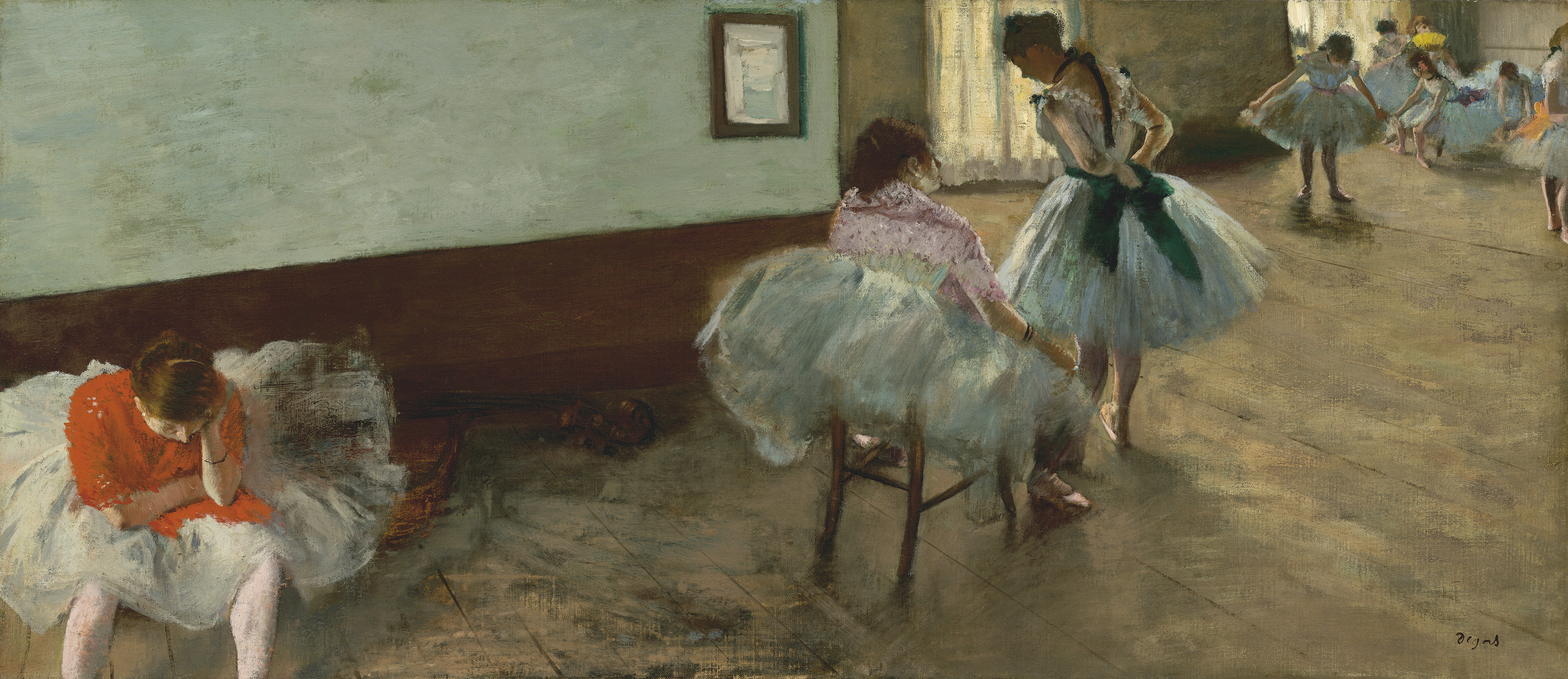I was able to take a trip from Kuwait to DC in December 2016. I was a great conference and we got a couple bonus days since our flight was cancelled due to weather. Took a trip back to the NGA (National Gallery of Art) on the Mall. Yes, I've been but I like going back and it's free - hard to beat that price. And there's always something new. Whether it's a temporary gallery and/or something I've forgotten.
Here's painting...
EDGAR DEGAS, French, 1834-1917
The Dance Lesson
c. 1879, oil on canvas, collection of Mr and Mrs Paul Mellon
~~~~~~
Hendrick Goltzius
Dutch 1558-1617
Ignis, c. 1586
I always love these sketches because they're often better than most "works" of art. This is Ignis who I gather is a god of fire...Ignis Fatuus proper. Surprisingly not that easy to find. This particular sketch is pen and ink with wash and white heightening on paper washed pink. Pretty cool techniques for 400+ years ago. I think those artists did the same as today...just tried stuff. Like da Vinci with the Last Supper (Il Cenacolo)...
For this work, Leonardo sought a greater detail and luminosity than could be achieved with traditional fresco. He painted The Last Supper on a dry wall rather than on wet plaster, so it is not a true fresco. Because a fresco cannot be modified as the artist works, Leonardo instead chose to seal the stone wall with a double layer of dried plaster. Then, borrowing from panel painting, he added an undercoat of white lead to enhance the brightness of the oil and tempera that was applied on top. This was a method that had been described previously, by Cennino Cennini in the 14th century. However, Cennini had recommended the use of secco for the final touches alone. These techniques were important for Leonardo's desire to work slowly on the painting, giving him sufficient time to develop the gradual shading or chiaroscuro that was essential in his style. (Wiki)
~~~~~~
RANDOLF ROGERS
American, 1825-1892
Nydia, the Blind Girl of Pompeii
Model 1855, carved 1860, marble
I feel like sculptures often get bypassed in a museum. But if one stops to think about it, anything in marble takes hours and hours and hours of work. And every cut risks destroying the entire piece. I try to keep that in mind as even I 'discount' the sculptures. As it's Pop Culture (closely associated with pop psych writer Malcolm Gladwell), people like to use the 10000 hour rule as a standard (or maybe to sound cool) to become world-class. That is 416 days and 16 hours. Michelangelo made his David from 1501 to 1504. He didn't work on it 24/7, but that allows 26000+ hours. Or about 9 hours a day. That's ONE piece. He 'knocked' out his Pietà in 1498-99. It probably wasn't 01 Jan 1498 to 31 Dec 1499, but even if it was, AND at 24/7 it's 17, 520 hours. My point, sculpture itself can take the time 'required' to become an expert...let alone actually becoming an expert. So, I thought this face was very well done, and it made me remember the work involved.
From the MET's site...
"Nydia, the Blind Flower Girl of Pompeii" was the most popular American sculpture of the nineteenth century. According to Rogers, it was replicated 167 times in two sizes. The subject was drawn from "The Last Days of Pompeii" (1834), a widely read novel by Lord Edward Bulwer-Lytton, which ends with the eruption of Mount Vesuvius in a.d. 79. Rogers’s evocative portrayal of Nydia highlights her heroic attempt to lead two companions out of the burning, ash-covered city. Her closed eyes and staff allude to her blindness, while the hand raised to her ear refers to her acute sense of hearing. The destruction of Pompeii is symbolized by the broken Corinthian capital beside her right foot.
~~~~~~
The Fall of Phaeton
oil on canvas, c. 1604/1065 (probably reworked c. 1606/1608
SIR PETER PAUL RUBENS
Flemish, 1577-1640
Flemish, 1577-1640
Had to take a shot of a PPR. Great artist, great painting. I do appreciate when galleries let you take non-flash pictures. They should and it shouldn't even be a question. Nothing happens except a lens opening and closing. The notion that photography hurts the painting and/or as a means to protect copy write, is silly. No one is going to pretend to own rights to pics in museums and a camera without flash is irrelevant. Thank you, National Gallery of Art, for allowing photos.
~~~~~~
Leaving the gallery, I saw this amazing sky with a could pattern I can't say I've seen before. Pretty cool. I tried some panoramic shots here.
-mm-








No comments:
Post a Comment